Transfer Music from Android to iPhone: Step-by-Step Guide
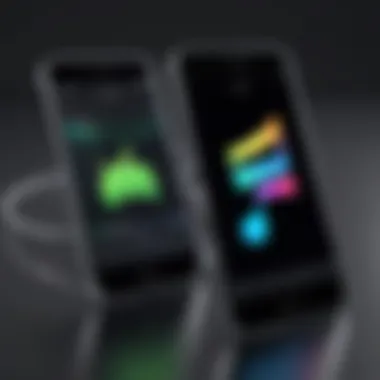
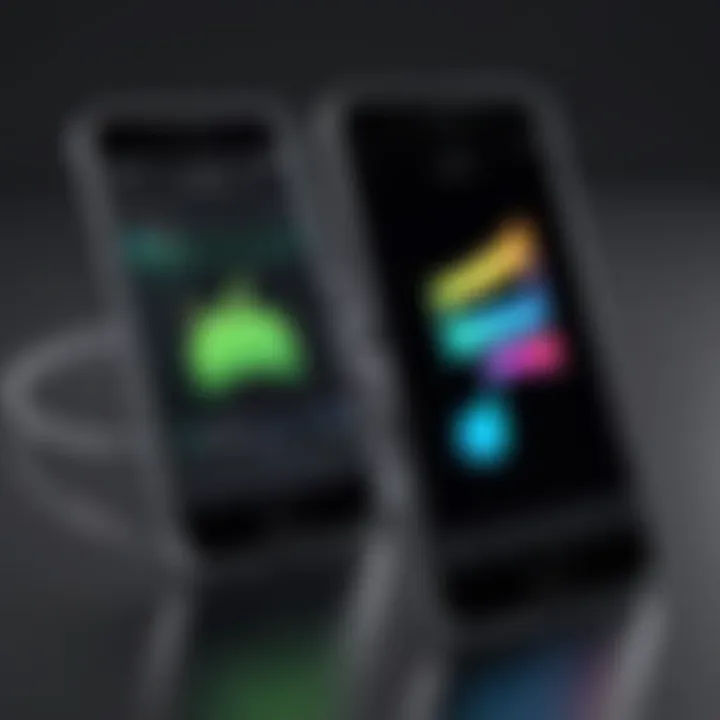
Intro
Transferring music from an Android device to an iPhone can prove to be a daunting task for users accustomed to the distinct ecosystem of each platform. Both Android and iPhone offer unique features that cater to different user preferences, thus creating challenges for migration. This guide aims to shed light on various methods available for seamless music transfer, emphasizing the practical strategies that can facilitate an effective transition.
As someone who has collected a library of songs, whether through purchases, downloads, or streams, the desire to retain your music collection during a device switch is a common plight. Users often wonder about potential complications, data compatibility, software regulations, and how to best execute the transfer without losing any treasured tracks. Understanding these challenges is vital for any user preparing for this digital move. In this article, we will explore detailed steps and tools all aimed at achieving a successful transfer of musical content across these devices.
Ultimately, it is about making a technology transition smooth and hassle-free, allowing users to continue enjoying their favorite songs on their new iPhone.
Preamble
Transferring music from Android to iPhone can seem like a daunting task. As more users switch between ecosystems, the need for a smooth transition becomes crucial. This article aims to simplify the process by offering a range of methods and tools suitable for tech-savvy individuals.
One of the most significant aspects of migrating music is addressing the compatibility challenges that arise. With different operating systems and file formats, users may encounter various obstacles. Understanding these challenges is a key step that can make the entire process more manageable.
Choosing the right method for transferring music is equally important. Users can opt for manual methods or leverage third-party applications. Both have their pros and cons, and the best choice will depend on personal preferences and specific use cases. This guide will highlight each approach in detail.
The article also emphasizes practical strategies. Clear, step-by-step instructions will be provided, ensuring that users can follow along without issues. Furthermore, post-transfer recommendations will be discussed, helping users optimize their music experience on the iPhone.
Ultimately, by navigating these considerations efficiently, users can enjoy a seamless transfer of their music libraries. Whether you are a gadget lover or an early adopter of technology, the information provided here will empower you to manage your music collection effectively between Android and iPhone.
"With the right approach, transferring music can be straightforward rather than complicated."
By the end of this comprehensive guide, readers will have the insights they need to transfer music effortlessly, maintaining the quality and organization they value in their collections.
Understanding the Compatibility Challenges
When migrating music from Android to iPhone, comprehending the compatibility challenges is paramount. This process involves several factors that can impede a seamless transfer. The differences in operating systems and variable file formats are central to the transfer process. Understanding these aspects aids in mitigating issues that could arise during music migration.
Operating System Differences
The operating systems for Android and iPhone, which is iOS, operate on fundamentally different architectures. Android is built on a Linux-based system, while iOS uses a variant of Unix. This discrepancy creates challenges in music management and data transfer. When moving music files from one platform to another, these systemic distinctions manifest in various ways. For instance, certain music management apps available for Android may not be present on iOS. Additionally, both platforms handle file transfer protocols differently, complicating the straightforward migration of data. Understanding these differences can help users identify the most compatible tools or methods for their situation.
File Format Variability
Another obstacle in transferring music lies in the variability of file formats. Android devices support a wide array of audio formats, such as MP3, AAC, FLAC, and OGG. On the other hand, iPhones predominantly utilize AAC and MP3 formats. Consequently, if you have music files in less common formats like FLAC or OGG, they may not function correctly once transferred to an iPhone. Before initiating the transfer process, it's prudent to examine your music library for unsupported formats. Users should consider converting these files into compatible formats using software that can handle audio conversion.
"Understanding the compatibility challenges between Android and iOS can significantly ease the migration process and prevent frustrations that arise from technical discrepancies."
By acknowledging these challenges upfront, individuals can take proactive measures to facilitate a smoother music transfer experience. This clarity not only enhances the process but also alleviates potential inconveniences that may arise during the transition.
Preparing for the Transfer Process
Before initiating the transfer of music from an Android device to an iPhone, careful preparation is critical. This stage ensures a smooth process and minimizes the likelihood of encountering issues. Careful planning also supports the user in understanding which methods suit their needs best.
Preparing for this transfer involves two main components: backing up your music library and choosing the right method for the transfer. Both facets are essential not just for the successful migration but also for the preservation of your music collection. A backup protects against any unforeseen data loss during the transfer, while understanding the different transfer methods available empowers you to select the most effective approach for your specific situation.
Backing Up Your Music Library
Backing up your music library is a vital step before any migration. Music collections can represent significant personal investment, both in terms of time and money. When transitioning to a new device like an iPhone, losing any part of that collection can be frustrating.
- Use Google Play Music or a similar service to upload your songs to the cloud. This act not only safeguards them, but also enables easy access to your music from any device with an internet connection.
- Create a local backup by transferring your files onto a computer. Programs such as Windows Media Player or Apple Music can help manage your songs and ensure they are safely stored locally.
- Check for duplicates and organize your music collection ahead of time. This way, you'll have a cleaner library after the transfer and can eliminate unnecessary clutter on the new device.
Taking these steps will not only provide security but also streamline the transfer process.
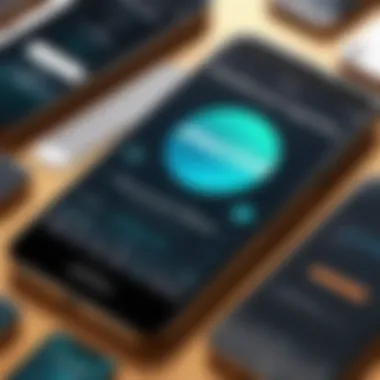
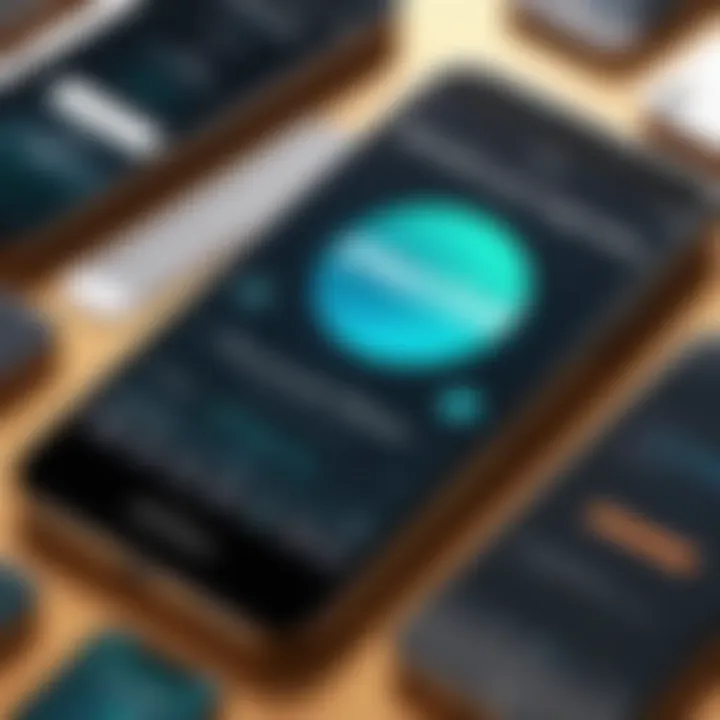
Choosing the Right Method for Transfer
Selecting the right transfer method is crucial. Different techniques can considerably impact the overall migration experience. Understanding the distinct characteristics of these methods allows you to make an informed decision.
Manual Transfer Methods
Manual transfer methods refer to direct, physical syncing processes, typically involving USB cables. This can include connecting your Android device to a computer, copying music files, and then transferring them to the iPhone.
- Key characteristic: This approach does not require additional software installations.
- Benefits: Manual transfers can be straightforward and ensure that file quality is maintained during the process. The direct transfer usually happens quickly without internet reliance.
- Drawbacks: However, these methods can be limited by cable availability and might not support all file formats needed for iPhone.
Third-Party Applications
Third-party applications have become increasingly popular for transferring music between devices. Applications such as SHAREit or Xender offer user-friendly interfaces for music migration.
- Key characteristic: These applications facilitate wireless transfers, often requiring minimal setup.
- Advantages: Speed and convenience are a significant draw as they can transfer multiple files at once. Also, users can easily manage their music libraries.
- Disadvantages: However, some apps may have limitations on the number of files or file sizes that can be transferred without payment.
It's essential to evaluate these methods based on your needs, familiarity with technology, and the volume of files you wish to transfer.
Overall, the right preparatory steps pave the way for a successful migration. Careful consideration of both backing up and selecting the transfer method is crucial for preserving your music library.
Method One: Using Cloud Services
Using cloud services to transfer music from Android to iPhone offers a practical and efficient solution for many users. This method takes advantage of internet connectivity to bypass traditional limitations that often occur when moving data between platforms. Cloud services facilitate the transfer process by allowing users to store their music temporarily in a virtual environment, which can then be accessed on the new device. This method can help maintain the quality of audio files and ensures that all metadata, such as artist names and album details, are preserved.
Benefits of Cloud-Based Transfers
Using cloud-based transfers has numerous advantages:
- Accessibility: Once your music is uploaded to the cloud, you can access it from any device that has internet connection. This can be particularly helpful when switching between numerous devices.
- Space Saving: Uploading music to the cloud can conserve space on both your Android and iPhone. This is important for devices with limited storage capacity, as large music libraries can occupy valuable space.
- Simplicity: Cloud services often provide user-friendly interfaces that simplify the process, making it accessible even for those who may not be tech-savvy.
- Data Preservation: By syncing music through a cloud service, there is reduced risk of data loss. Your songs are stored securely, minimizing any chance of accidental deletion.
Step-by-Step Guide to Google Drive Transfer
Transferring music using Google Drive can be done in several straightforward steps:
- Install Google Drive on Android: If you haven't already, download and install Google Drive from the Google Play Store. Sign in with your Google account or create a new one if needed.
- Upload Music Files: Open Google Drive on your Android device. Tap the ‘+’ icon and select ‘Upload’. Choose the music files you wish to transfer. Depending on the total size, this might take a few minutes.
- Verify Uploads: Once the upload is complete, ensure all files have been successfully transferred by checking them in your Google Drive account.
- Download Google Drive on iPhone: On your iPhone, download the Google Drive app from the App Store. Sign in using the same Google account used on your Android device.
- Access Music on iPhone: Once signed in, navigate to the ‘My Drive’ section, find the uploaded music, and tap on the desired track to download it or listen directly.
- Import to Music Library: For better management, you can then transfer these files into your iPhone's music library utilizing a compatible music app or service that allows file imports.
This method capitalizes on Google Drive’s capabilities, providing a seamless experience for music transfer between different operating systems.
Method Two: Utilizing iTunes
Using iTunes for transferring music from an Android device to an iPhone serves as a traditional yet effective method. Despite the increasing popularity of cloud services and third-party apps, iTunes remains a valuable tool, especially for users who prefer managing their music libraries directly on their desktops. With iTunes, users can not only transfer music but also create playlists, organize tracks, and, importantly, maintain backup copies of their collections. This method is particularly useful for those with large libraries or specific organizational needs. Moreover, since many users are already familiar with iTunes, leveraging this platform may also streamline the transfer process.
Setting Up iTunes for Transfer
Before starting the music transfer, a few crucial steps need to be taken to ensure iTunes is properly set up on your computer. First, if you do not have iTunes installed, download it from the official Apple website and follow the installation instructions. It is compatible with both Windows and macOS systems. Once installed, consider updating to the latest version to guarantee all features and functionality are accessible.
Next, open iTunes and sign in with your Apple ID. This will enable you to access additional features like syncing with your iPhone once it's connected. It is also a good idea to create a backup of your existing music library. This precaution helps safeguard your files before initiating the import process from the Android device.
A key point to keep in mind is that users must prepare for potential synchronization conflicts. If this happens, the software prompts will guide you on how to resolve these issues by selecting which files to keep or overwrite. It may be helpful to check the preferences setting on iTunes to manage how songs are imported and rendered for optimal quality.
Importing Music from Android
After setting up iTunes, the next step involves importing music from your Android device. Connect your Android smartphone to your computer using a USB cable. Ensure that the device is unlocked, and the necessary settings are adjusted to allow file transfers. The computer should recognize the device; if it does not, double-check USB settings on the Android for media transfer protocol, also known as MTP.
Once connected, navigate to the Android device’s storage through your computer’s file explorer. Find the folder where your music is stored, typically within the "Music" or "Media" subfolder. Select the songs or albums you wish to transfer. To ensure a smooth upload process, consider organizing your music files in advance.
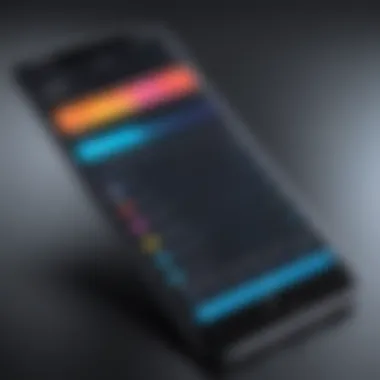
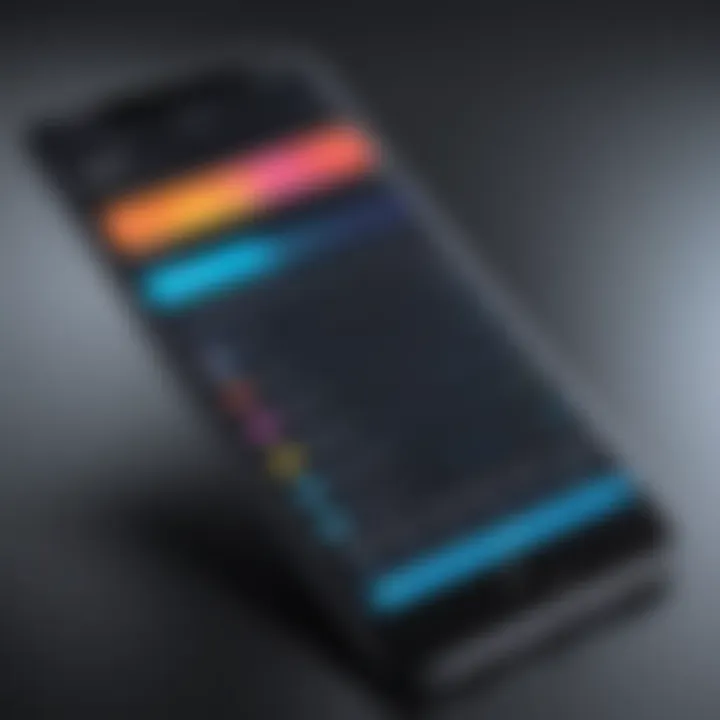
You can then drag and drop these files into iTunes directly or use the import feature in iTunes by selecting "File" > "Add to Library". Choose the files you just copied from your Android device. iTunes will import them into your library, allowing you to manage them as needed.
Remember, transferring music can sometimes lead to file format issues, particularly if the formats differ between devices. Ensure your music files are compatible with iTunes for a successful transfer.
To finalize the process, connect your iPhone to the computer. A prompt should appear in iTunes, allowing you to sync the imported music to your iPhone. Choose the desired playlists, artists, or albums, and click the "Sync" button. This action will transfer your selected music to your new device.
By following these steps, users can leverage iTunes to effectively move their music collection from Android to iPhone, ensuring that all their favorite tracks are readily available on their new device.
Method Three: Third-Party Applications
Transferring music between different platforms can be complex due to the variances in file formats and connectivity options. Third-party applications offer a versatile and user-friendly solution for moving music from an Android device to an iPhone, greatly simplifying the transfer process. These applications generally provide multiple transfer methods, elaborate on user experience, and ease the inconvenience of managing different operating systems.
Several notable apps exist to address this issue, and understanding their features helps in choosing the right one. Third-party applications often allow syncing music without the need for extensive technical skills, making them accessible to many users. Furthermore, they can facilitate the transfer of playlists and album art, aspects often overlooked in simpler methods.
Overview of Popular Apps
App A: Syncios
Syncios stands out due to its comprehensive music transfer capabilities. This application offers a sleek interface and supports various audio formats, allowing users to easily transfer files. The key characteristic of Syncios lies in its ability to bulk transfer, making it a beneficial choice for users with extensive music libraries. Its unique feature is the ability to manage their music collections by editing metadata directly within the app. However, some users may find that performance slows with large libraries, which can be a disadvantage.
App B: Music Move
Music Move is another app that merits attention. It specifically focuses on easing the transition of music from Android to iPhone. The key characteristic of this app is its simplicity; even first-time users can navigate it with ease. A unique aspect is its capability to retain playlists during the transfer process, which is crucial for many users. One caveat, however, is that Music Move may not support all file formats, so users need to verify compatibility in advance.
App C: Dr.Fone
Dr.Fone excels in providing a complete mobile management solution, which includes music transfer. This application is recognized for its reliability. The main advantage of Dr.Fone is its robust support for multiple file types, ensuring that users can move practically any form of music. Its unique feature includes a built-in tool for repairing music files that might be corrupted. Nonetheless, its multi-functionality can sometimes be overwhelming for users who simply want to transfer music.
Installation and Setup
Using third-party applications to transfer music typically involves a straightforward installation and setup process. To begin, users need to download the desired application from the official website or a trusted app store. Following installation, a user must connect both devices, usually via USB, to facilitate the transfer. From here, the setup usually involves selecting files and pressing the transfer button. The simplicity of most interfaces allows for quick setup, though attention should be paid to permission requests during installation to avoid issues later on.
Manual Transfer Methods
Manual transfer methods play a crucial role in transferring music from Android to iPhone. These methods allow you to have direct control over your music files. This can be particularly beneficial if you want to ensure that specific songs or albums are moved. Unlike cloud-based solutions, these techniques do not require stable internet. They can also be faster, especially when handling large libraries. The primary manual methods include using USB cables and direct file transfers.
Using USB Cables
Using USB cables is one of the most straightforward methods for transferring music. This process involves connecting your Android device to a computer and then transferring the music files to your iPhone via the same computer. To begin, you will need a compatible USB cable for both devices.
- Connect your Android device to the computer using the USB cable. Ensure that your phone is set to allow file transfers.
- Locate your music files on the Android device. Typically, they are stored in the folder.
- Copy the desired files onto your computer. You can use simple keyboard shortcuts or the right-click menu for this.
- Disconnect the Android device and connect your iPhone. Open iTunes (or Finder on macOS Catalina and later) to facilitate the transfer.
- Add the copied music files from your computer to the iPhone. This process may vary slightly depending on your operating system.
This method provides a tangible and reliable approach, but remember that it may require some technical knowledge, especially when dealing with software like iTunes.
Direct File Transfers
Direct file transfers involve transferring music files directly between devices without the need for a computer. This method is less common but still valid in specific scenarios, especially when using applications designed for file sharing via Wi-Fi or Bluetooth.
To use this method, follow these steps:
- Enable Bluetooth or Wi-Fi Direct on both your Android and iPhone. Make sure they are visible to each other.
- Select the music files you wish to transfer on your Android device. Use a file manager app for easier navigation.
- Initiate the transfer. Depending on the application used, this may involve selecting the iPhone from a list and confirming the action.
- Accept the incoming files on your iPhone. Monitor the progress to ensure that all files are received.
While direct file transfers can be convenient, they might be subject to file size limitations and are often slower than USB methods. Moreover, ensuring that your music remains organized through this method requires extra attention.
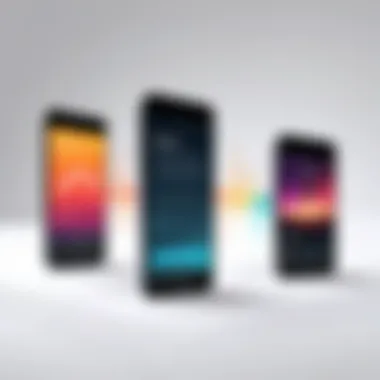
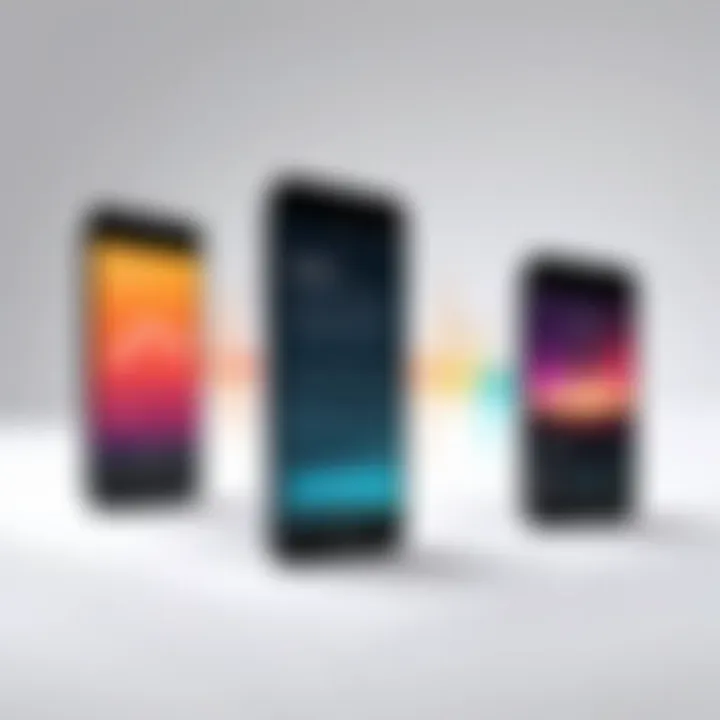
Troubleshooting Common Issues
Transferring music from Android to iPhone can be complex. Sometimes, users encounter problems that halt the migration process. Addressing such issues is crucial. This section highlights common obstacles and offers solutions to enhance the user experience. Understanding these problems will save time, reduce frustration, and ensure a smooth transition.
File Format Errors
File format errors often arise during the transfer of music files. Different operating systems handle audio file formats in various ways. For instance, Android devices commonly use formats like MP3, M4A, or OGG, whereas iPhones primarily support M4A and AAC formats.
When a user tries to play a music file on iPhone that has an unsupported format, they will see an error message. To avoid this, ensure that audio files are in compatible formats before transferring them. Here are some steps to follow:
- Check File Compatibility: Confirm that the audio files are in M4A or AAC format.
- Convert Files If Necessary: Use file conversion software, such as Zamzar or Audacity, to change unsupported formats to ones accepted by iPhone.
- Test on a Sample File: Before transferring an entire library, test the transfer with a single file to assess compatibility.
"Ensuring file format compatibility can save ample time and prevent transfer issues."
Connection Problems
Connection issues can be annoying during the music transfer process. They can disrupt both cloud-based transfers and physical connections using USB cables. Here are common connection problems and their solutions:
- Wi-Fi Stability: For cloud-based methods, unstable Wi-Fi can lead to incomplete transfers. It is essential to check the network connection before starting the transfer.
- USB Cable Issues: When using USB cables, problems with the cable or ports might lead to interrupted transfers. Always check the condition of the cable and try different ports if necessary.
- Device Recognition: Sometimes, the computer fails to recognize the Android or iPhone device. Restarting both devices can resolve recognition issues.
By preparing for file format errors and connection problems, users can enhance their music transfer experience significantly. Effective troubleshooting is key to achieving a successful migration.
Post-Transfer Steps
After successfully transferring music from an Android device to an iPhone, it is crucial not to overlook the post-transfer steps. This stage holds significant importance as it allows users to ensure the integrity of their music collection and optimize their listening experience. Missing this phase can lead to disappointment, particularly if certain songs are of subpar quality or if the library is disorganized.
Verifying Music Quality
Verifying the quality of your music files should be one of your first priorities after transfer. This step goes beyond mere aesthetics; it ensures that the sound quality meets your expectations.
To verify music quality, follow these guidelines:
- Play a random selection of songs. Focus on those that you cherish or frequently listen to.
- Listen for any apparent distortions, skips, or missing segments. A high-quality audio file should sound smooth with no interruptions.
- Compare the sound of these tracks to their original versions on the Android device. Any discrepancies can indicate transfer issues.
If you come across files with poor quality, consider re-importing them from the original source or checking file compatibility with the iPhone. Often, formats get altered during transfer, which can affect playback.
"The journey doesn’t end at transferring; music is meant to be enjoyed with full clarity."
Keep in mind that digital music quality can degrade if files are compressed poorly. Thus, selecting robust transfer methods can lead to better retention of original sound quality.
Organizing Your Music Library on iPhone
Once you ascertain that the music plays well, the next step involves organizing your music library on the iPhone. A well-structured library not only enhances your enjoyment but also simplifies navigation. Here are effective strategies to organize your music:
- Create Playlists: Group songs by genre, artist, or mood. This allows for quick access during different activities, like working out or relaxing.
- Correct Metadata Information: Ensure that metadata like song title, artist name, and album name are accurate. Poor metadata can lead to confusion and make searching for tracks cumbersome.
- Utilize Folders: If your library is extensive, consider using folders within playlists or use apps that allow for more detailed categorization.
Remember that iPhones may have specific limitations in terms of file types and organization methods. Familiarizing yourself with these can drastically improve your experience.
Lastly, regular updates to your iTunes library or music services like Apple Music can help maintain organization and make room for future music acquisitions.
Culmination
The process of transferring music from an Android device to an iPhone is not merely a technical endeavor. It embodies the broader theme of switching platforms and the complexities that accompany it. As outlined throughout this article, several methods exist, each with distinct advantages and limitations. Understanding these methods is fundamental for a successful transition.
One prominent aspect is the importance of selecting the right transfer method. Similarities and differences in operating systems can create obstacles; knowing how to navigate these is crucial. Using cloud services, iTunes, or third-party applications not only offers flexibility but can also influence the ease and effectiveness of the transfer. Evaluating the strengths of each method allows users to choose according to their unique needs.
Another critical consideration is file compatibility. Various audio formats may not be universally supported between devices. Recognizing which formats are best suited for iPhone ensures that users do not encounter frustrating issues down the line. This foresight can save considerable time and effort, avoiding the need to convert files after the transfer.
Post-transfer tasks such as verifying the quality and organizing a music library also gain emphasis. These steps not only enhance user experience but establish a well-structured collection on the new device. The effort taken in these concluding stages reflects a commitment to maintaining an enjoyable music environment.
In summary, a well-planned and executed music transfer marks a significant step in adapting to a new device. With the knowledge acquired throughout this guide, readers are now equipped to tackle the challenges posed by the transition from Android to iPhone. This understanding empowers them to make informed decisions, ensuring a smooth migration of their cherished music collections.







